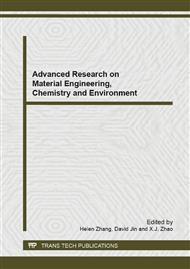p.546
p.550
p.554
p.558
p.562
p.567
p.571
p.575
p.578
The Static Finite Element Analysis of the same Bar under the Different Welding Tubular Rectangle-Joints
Abstract:
In this article, through to the railway station of taiyuan a housing cover used in the welding space Rectangular tubular joints this engineering example, By using a large finite element software ANSYS to analyze the node, through the entity modeling, and use the given design load to theoretical analysis, two kinds of nodes to discuss security and rationality of these two kinds of nodes, the two nodes is obtained under different arrangement in chord combination, each member under the elastic phase and the maximum load value, provide certain data for subsequent node test support. Key words: Rectangular tubular joints, Node, Finite element, Maximum load
Info:
Periodical:
Pages:
562-566
Citation:
Online since:
September 2013
Authors:
Keywords:
Price:
Сopyright:
© 2013 Trans Tech Publications Ltd. All Rights Reserved
Share:
Citation:


